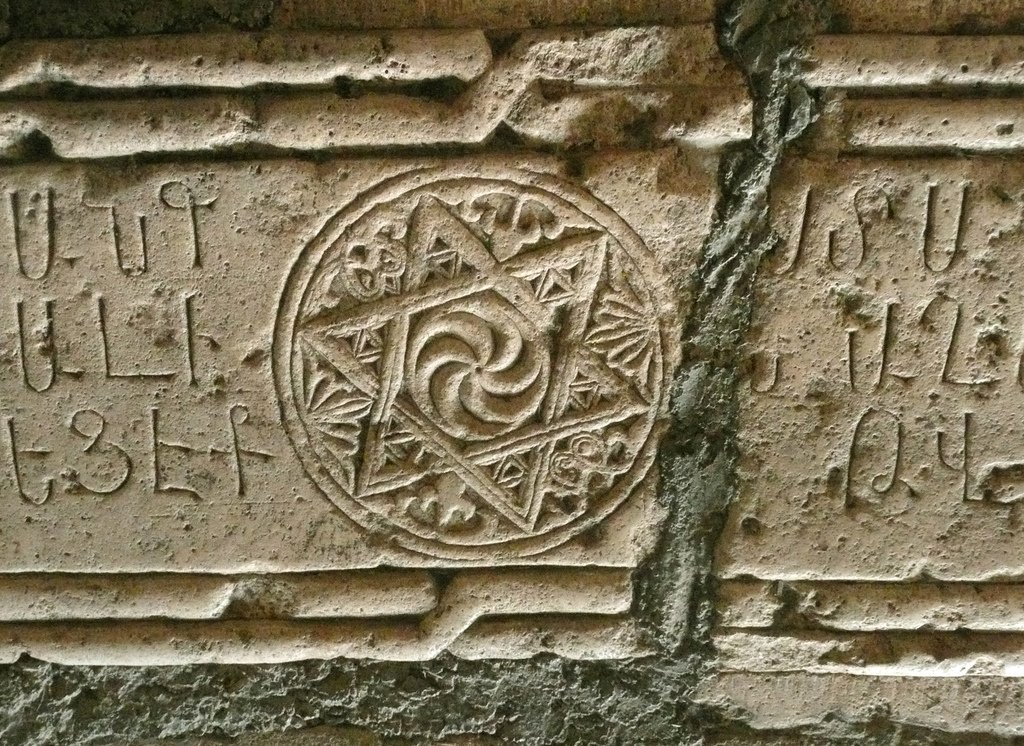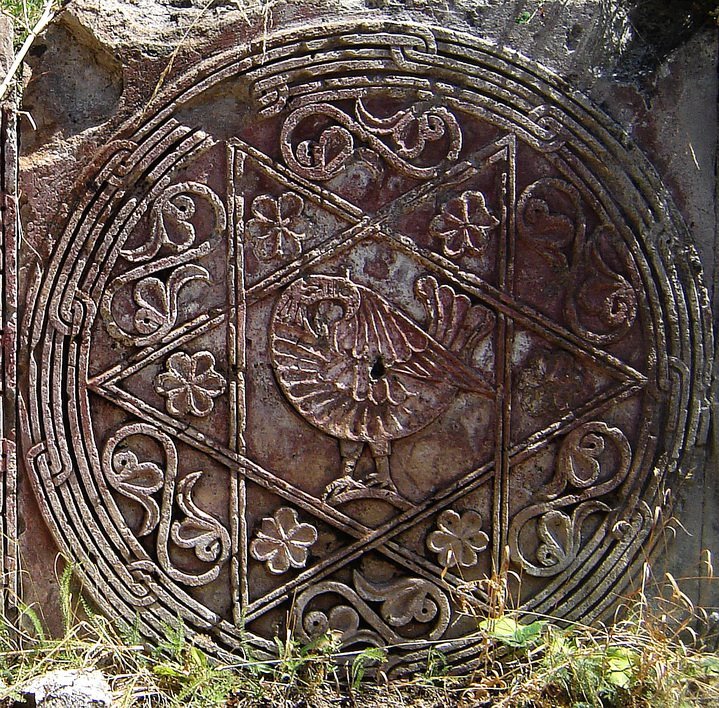Ancient Iconic Armenian Wheel Of Eternity Depicted Inside A Six Pointed Star
A. Sutherland - AncientPages.com - Armenian Wheel of Eternity is perhaps the most iconic among many ancient Armenian symbols. It is one of the country's most ancient and sacred symbols. Its origin is traced to the early observations of the sky and widely recognized worship of the Armenian Deity of the Sun.
It is also depicted in the emblem of the coat of arms of the country's ruling political party and serves as a decoration of the sacred Armenian alphabet.
In some cases, Armenians depicted the “Wheel of Eternity” inside a six-pointed star. The six-pointed star (hexagram) with the Jewish Star of David (Magen David), is also the modern symbol of Jewish identity and Judaism.
As one of the most common and sacred symbols of Armenian culture, the Wheel of Eternity originates from the worship of the sun and the sky. and the sun.
The Armenians - recognized for their skills as craftsmen, mathematicians, and architects - have used the hexagram for a very long time.
In Armenian architecture, the hexagram symbol has been used frequently. It was believed that the symbol had magical powers, which were widely incorporated in sacred art, astronomy, and architecture.
Left: Hexagrams on the walls of 13th Century Noravank monastery. source; Right: Hexagram symbol, Church of The Citadel Palace, Ani, Armenia. Image source.
One of the most famous examples of a hexagram in architecture can be found in the 12th century Armenian Church, the Cathedral of St. James in Jerusalem, where the hexagram-shaped arches support the dome.
Similar dome arches in the shape of a six-pointed star can be found in several other architectural solutions across the Armenian country.
This was not, however, the only architectural purpose for using this symbol.
A lot of Armenian churches have been built in the shape of a six-pointed star because according to ancient beliefs, the six-pointed star was considered a sacred decoration protecting the church like magic charms.
The oldest known depiction of a six-pointed star (dating back to the 3rd millennium BC.) was excavated in the Ashtarak burial mound in “Nerkin Naver” (in Armenia). This was confirmed by a series of radiocarbon analyses of artifacts, conducted in laboratories in Germany and in the USA.
The handle of a dagger depicts the world's earliest decoration of a six-pointed star buried in a burial mound containing over 500 graves.
The first and the most important Armenian Cathedral of Etchmiadzin (303 AD, build by the founder of Christianity in Armenia) is decorated with many types of ornamented hexagrams and so is the tomb of an Armenian prince of the Hasan-Jalalyan dynasty of Khachen (1214 A.D.) in the Gandzasar Church of Artsakh.
Written by – A. Sutherland - AncientPages.com Senior Staff Writer
Copyright © AncientPages.com All rights reserved. This material may not be published, broadcast, rewritten or redistributed in whole or part without the express written permission of AncientPages.com
Expand for referencesMore From Ancient Pages
-
 Great Flood Myth Told By Klallam People Of Washington’s Olympic Peninsula – Confirmed
Archaeology | May 17, 2019
Great Flood Myth Told By Klallam People Of Washington’s Olympic Peninsula – Confirmed
Archaeology | May 17, 2019 -
 Was King William II Murdered In The New Forest?
Featured Stories | Aug 5, 2021
Was King William II Murdered In The New Forest?
Featured Stories | Aug 5, 2021 -
 Ancient Secrets Of The Masters Of Mu – Myths And Legends Examined – Part 1
Featured Stories | Aug 24, 2018
Ancient Secrets Of The Masters Of Mu – Myths And Legends Examined – Part 1
Featured Stories | Aug 24, 2018 -
 Is There A Hidden Ancient Message Inside San Miniato Al Monte Basilica?
Featured Stories | Oct 3, 2022
Is There A Hidden Ancient Message Inside San Miniato Al Monte Basilica?
Featured Stories | Oct 3, 2022 -
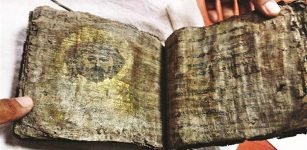 A Millennium-Old Gilded Bible Seized In Tokat, Turkey
Archaeology | Oct 28, 2015
A Millennium-Old Gilded Bible Seized In Tokat, Turkey
Archaeology | Oct 28, 2015 -
 Wolstenholme Towne: Lost Virginia Settlement – Destroyed, Abandoned And Forgotten
Featured Stories | Jun 26, 2018
Wolstenholme Towne: Lost Virginia Settlement – Destroyed, Abandoned And Forgotten
Featured Stories | Jun 26, 2018 -
 Could Aztec Innovative ‘Chinampas’ – ‘Floating Islands’ Help Modern Farmers?
Archaeology | Nov 4, 2019
Could Aztec Innovative ‘Chinampas’ – ‘Floating Islands’ Help Modern Farmers?
Archaeology | Nov 4, 2019 -
 Andlang – Spiritual Heaven And Shelter For The Dead After Ragnarok In Norse Mythology
Featured Stories | Aug 23, 2019
Andlang – Spiritual Heaven And Shelter For The Dead After Ragnarok In Norse Mythology
Featured Stories | Aug 23, 2019 -
 ‘Blue Highways’ Helped Middle Stone Age Humans Who Survived The Toba Supereruption 74,000 Years Ago
Evolution | Mar 26, 2024
‘Blue Highways’ Helped Middle Stone Age Humans Who Survived The Toba Supereruption 74,000 Years Ago
Evolution | Mar 26, 2024 -
 Enigmatic Ancient Kingdom Of Thulamela Created By Mysterious Shona People
Civilizations | Dec 28, 2016
Enigmatic Ancient Kingdom Of Thulamela Created By Mysterious Shona People
Civilizations | Dec 28, 2016 -
 Who Was The Mysterious Old Leather Man?
Featured Stories | Sep 1, 2021
Who Was The Mysterious Old Leather Man?
Featured Stories | Sep 1, 2021 -
 Extremely Unique Ancient Roman Arm Guard Found At Trimontium Fort – Restored And On Display For The First Time Ever
Archaeology | Jan 22, 2024
Extremely Unique Ancient Roman Arm Guard Found At Trimontium Fort – Restored And On Display For The First Time Ever
Archaeology | Jan 22, 2024 -
 Remarkable Marble Fragment From The Temple Of Zeus In Akragas Found Underwater Off The Coast Of Sicily
Archaeology | Feb 6, 2024
Remarkable Marble Fragment From The Temple Of Zeus In Akragas Found Underwater Off The Coast Of Sicily
Archaeology | Feb 6, 2024 -
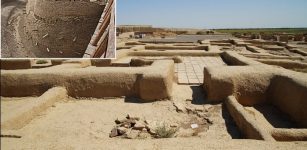 Climate Change, Not Genghis Khan Caused Demise Of Central Asia’s River Civilizations
Archaeology | Dec 17, 2020
Climate Change, Not Genghis Khan Caused Demise Of Central Asia’s River Civilizations
Archaeology | Dec 17, 2020 -
 Mount Ararat Was Once Located By The Sea – Study Of Palm Leaves Reveals
Archaeology | Jul 18, 2020
Mount Ararat Was Once Located By The Sea – Study Of Palm Leaves Reveals
Archaeology | Jul 18, 2020 -
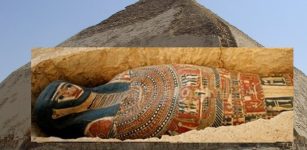 Egypt Opens Two Ancient Pyramids And Unveils Newly Found Sarcophagi And Mummies
Archaeology | Jul 15, 2019
Egypt Opens Two Ancient Pyramids And Unveils Newly Found Sarcophagi And Mummies
Archaeology | Jul 15, 2019 -
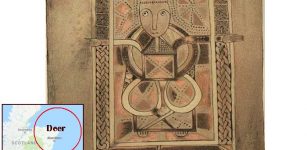 Book Of Deer And The Lost Scottish Monastery – Archaeologists Report New Finds
Archaeology | Jan 10, 2018
Book Of Deer And The Lost Scottish Monastery – Archaeologists Report New Finds
Archaeology | Jan 10, 2018 -
 Incredibly Rare Iron Age Wooden Objects Discovered In 2,000-Year-Old Waterlogged Site In The UK
Archaeology | Jan 21, 2023
Incredibly Rare Iron Age Wooden Objects Discovered In 2,000-Year-Old Waterlogged Site In The UK
Archaeology | Jan 21, 2023 -
 What Was The Extreme Ritual Of Sokushinbutsu?
Ancient Traditions And Customs | Jun 20, 2018
What Was The Extreme Ritual Of Sokushinbutsu?
Ancient Traditions And Customs | Jun 20, 2018 -
 Battle Of Abrittus: Roman Emperor Decius And His Troops Ambushed And Defeated By Invading Goths
Featured Stories | Jul 1, 2019
Battle Of Abrittus: Roman Emperor Decius And His Troops Ambushed And Defeated By Invading Goths
Featured Stories | Jul 1, 2019

